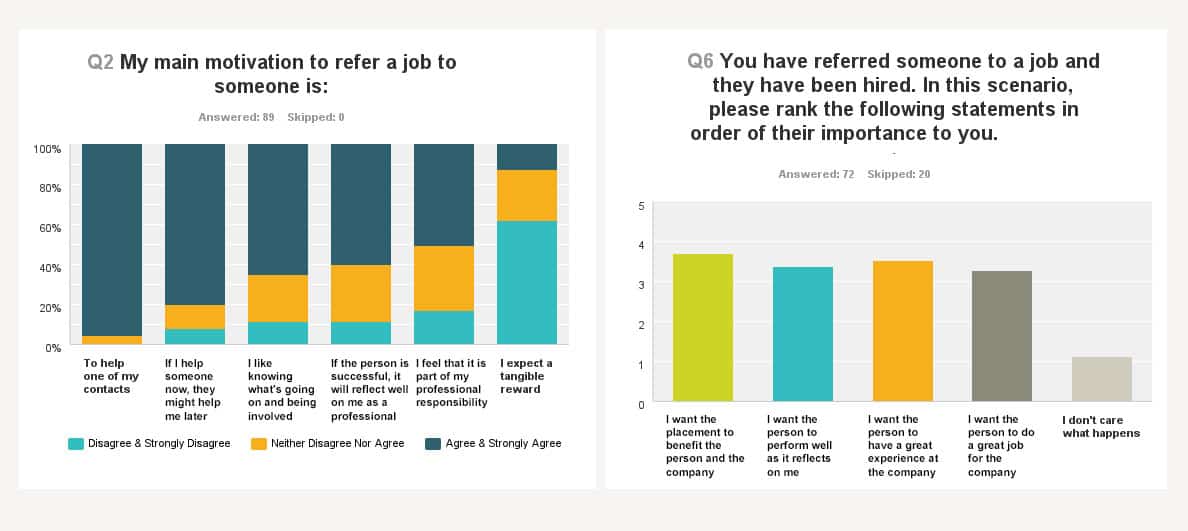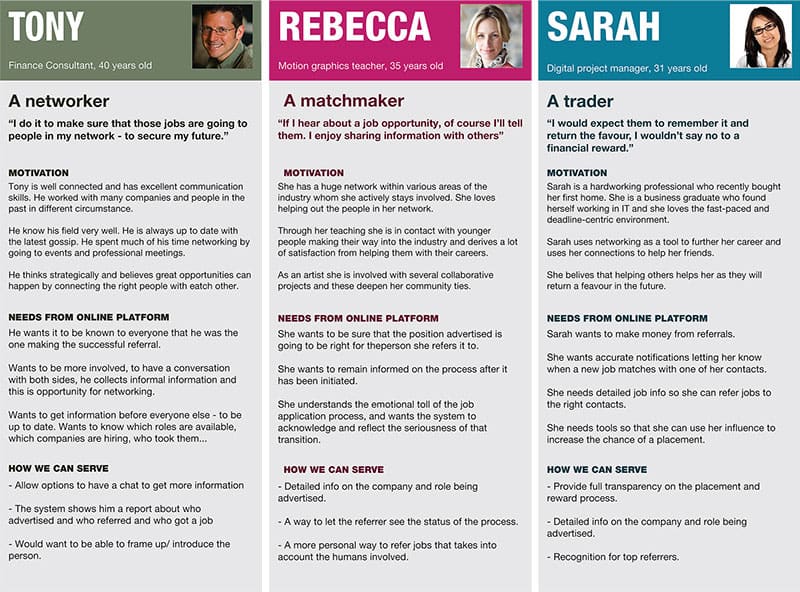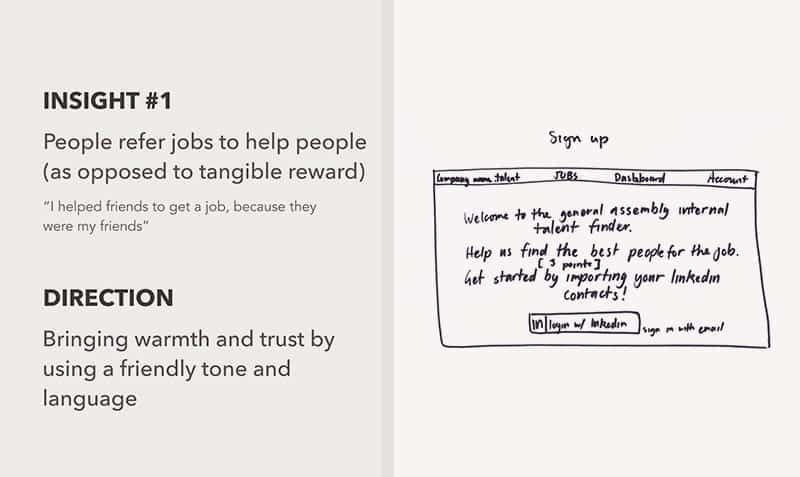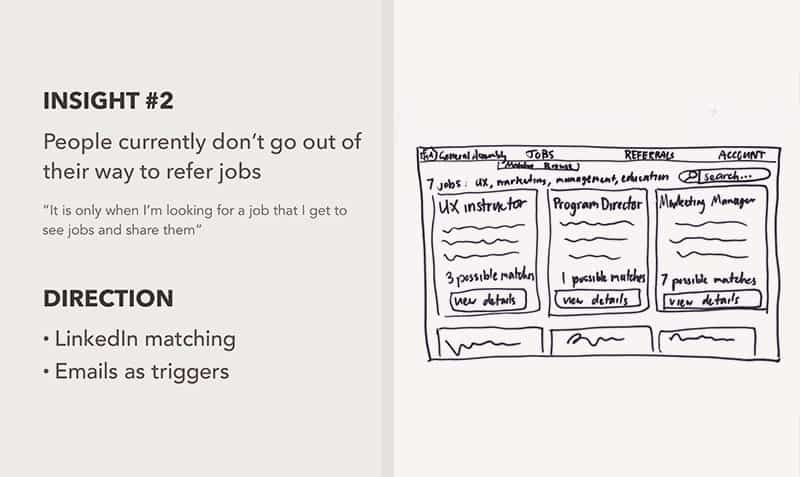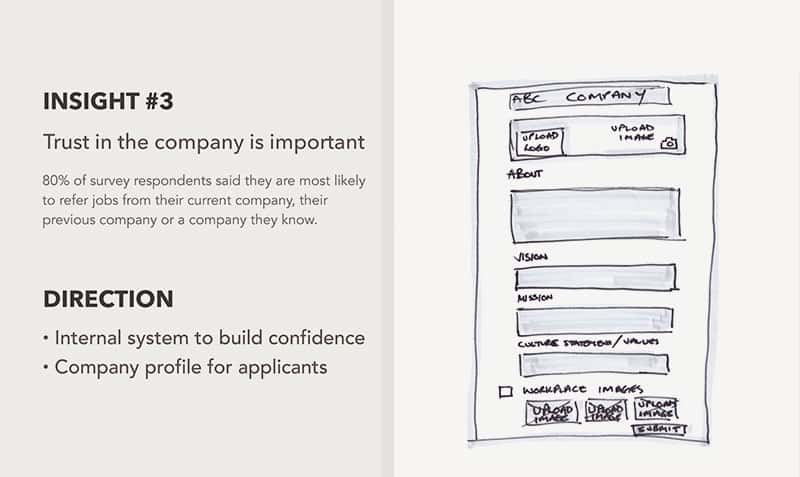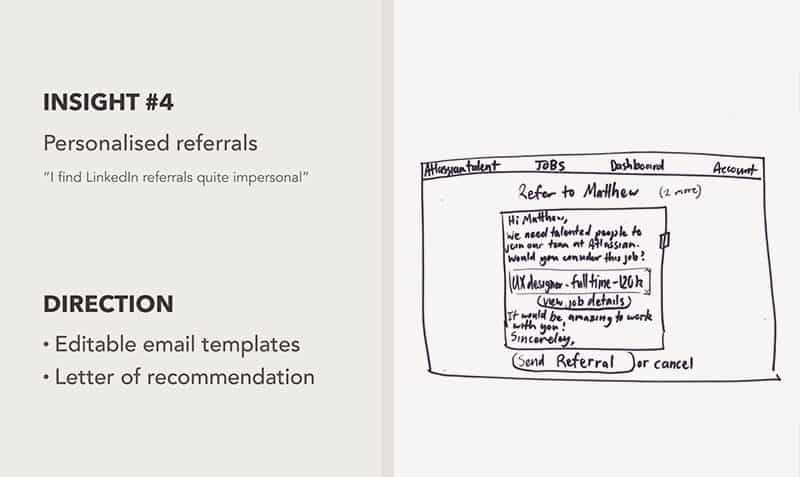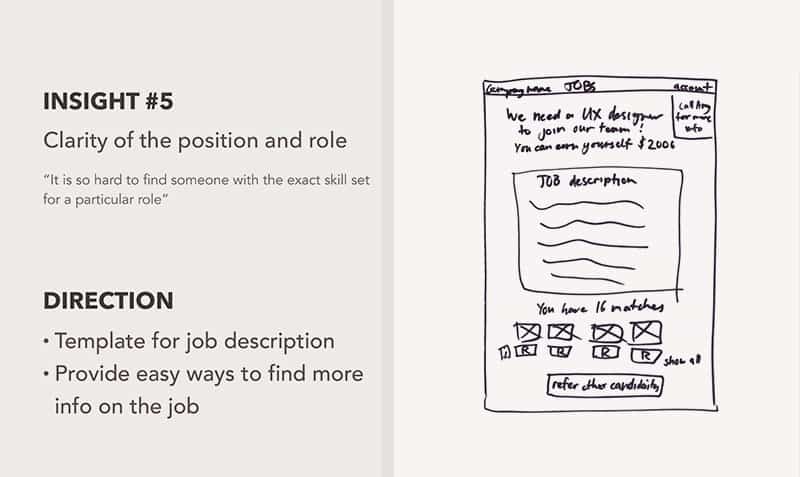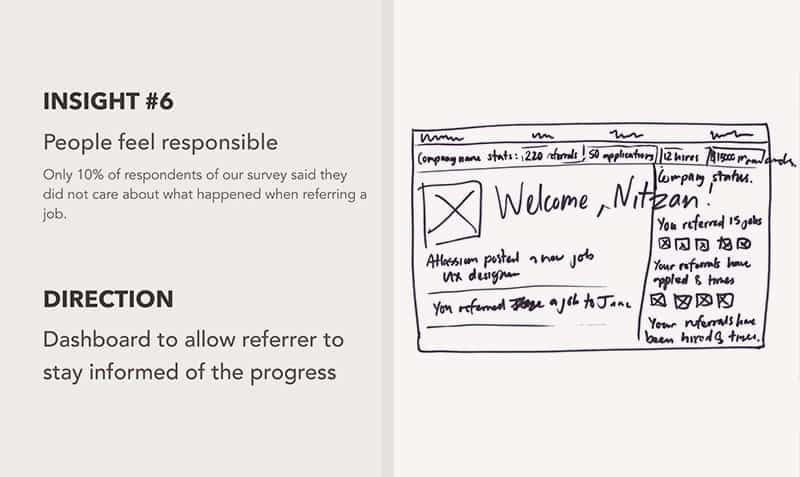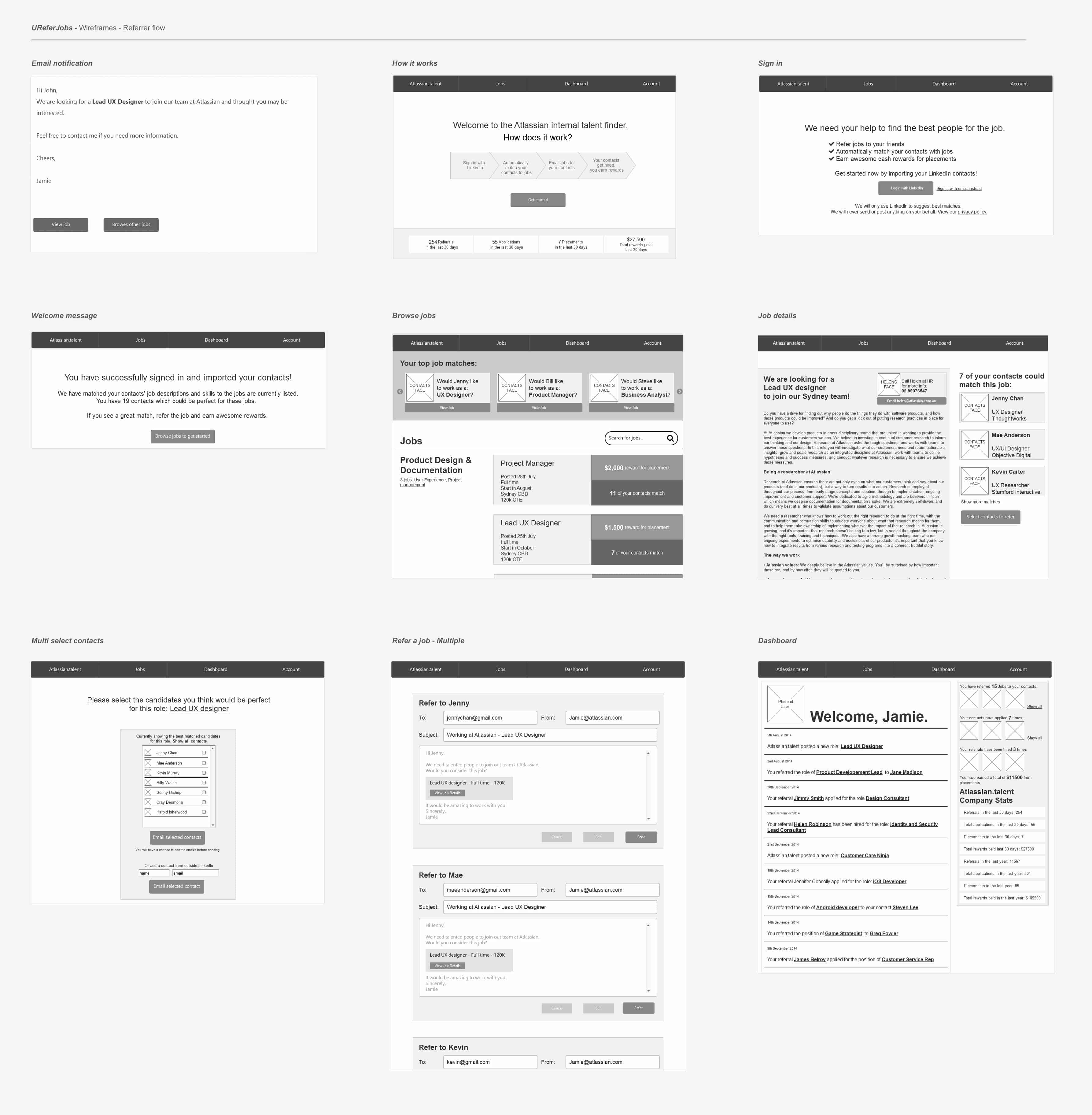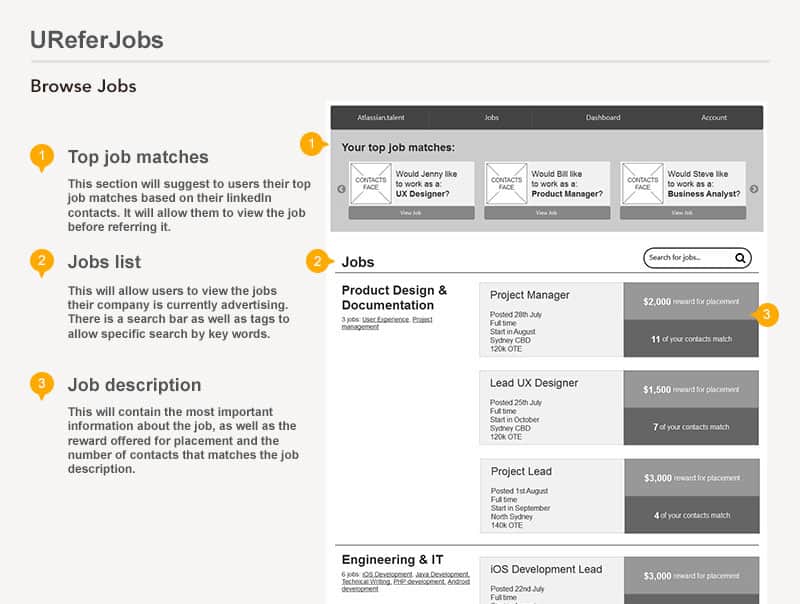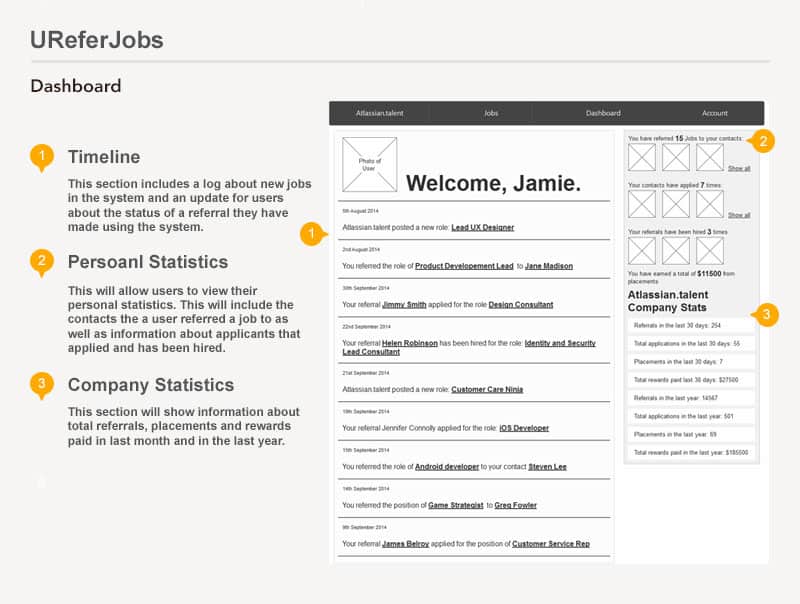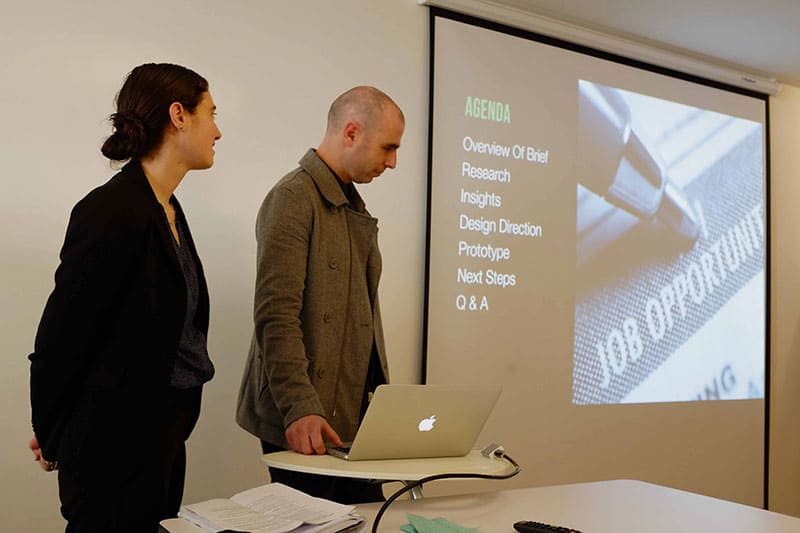This team project’s goal was to discover what motivates a person to refer a job, and to design an internal job referral platform based on what we have discovered.
Our solution was to focus on internal referral systems (i.e. for jobs advertised by the companies in which users are currently employed), and designing a tool that automatically suggests matches between jobs and the users’ LinkedIn contacts, to encourage and enable effortless referrals.
My role included contribution to all aspects of the project, from research to prototype.
The process
Research
We conducted interviews with the different user groups: applicants, referrers and recruiters. Based on the interviews findings we designed an online survey. The goal was to gain insights about users’ motivations, behavior and concerns regarding job referrals.
Key research findings:
- People refer jobs to help other people (as opposed to tangible reward)
- People feel responsible and want to be personally involved/informed throughout the referral process and after the referral was made.
- Trust in the company is important.
Personas
User personas were developed through mostly qualitative research, including in-depth interviews with a range of potential users about what might motivate them to make job referrals.
From Research to Design
The design captured all key insights from the research.
Wireframes
Prototyping and Usability Testing
The prototypes were used for usability testing. The key findings from tests were that while the system was generally easy to use, some users had privacy and other concerns about the automated matching with their LinkedIn contacts. This highlighted the need for more research and design work to increase users’ trust in the system.
The prototype was presented to the clients at UReferJobs to gain feedback from the company’s perspective. The company representatives acknowledged some key lessons from the project, particularly the insights about the significance of users’ trust and how it could be generated through design.
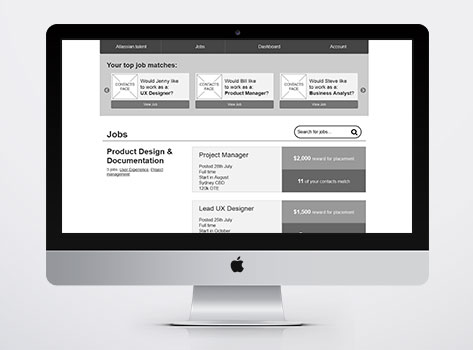
UX Methods
- Interviews
- Survey Design
- Personas
- Feature prioritization
- Site Map and User Flows
- Sketches
- Prototyping
- Usability Testing
